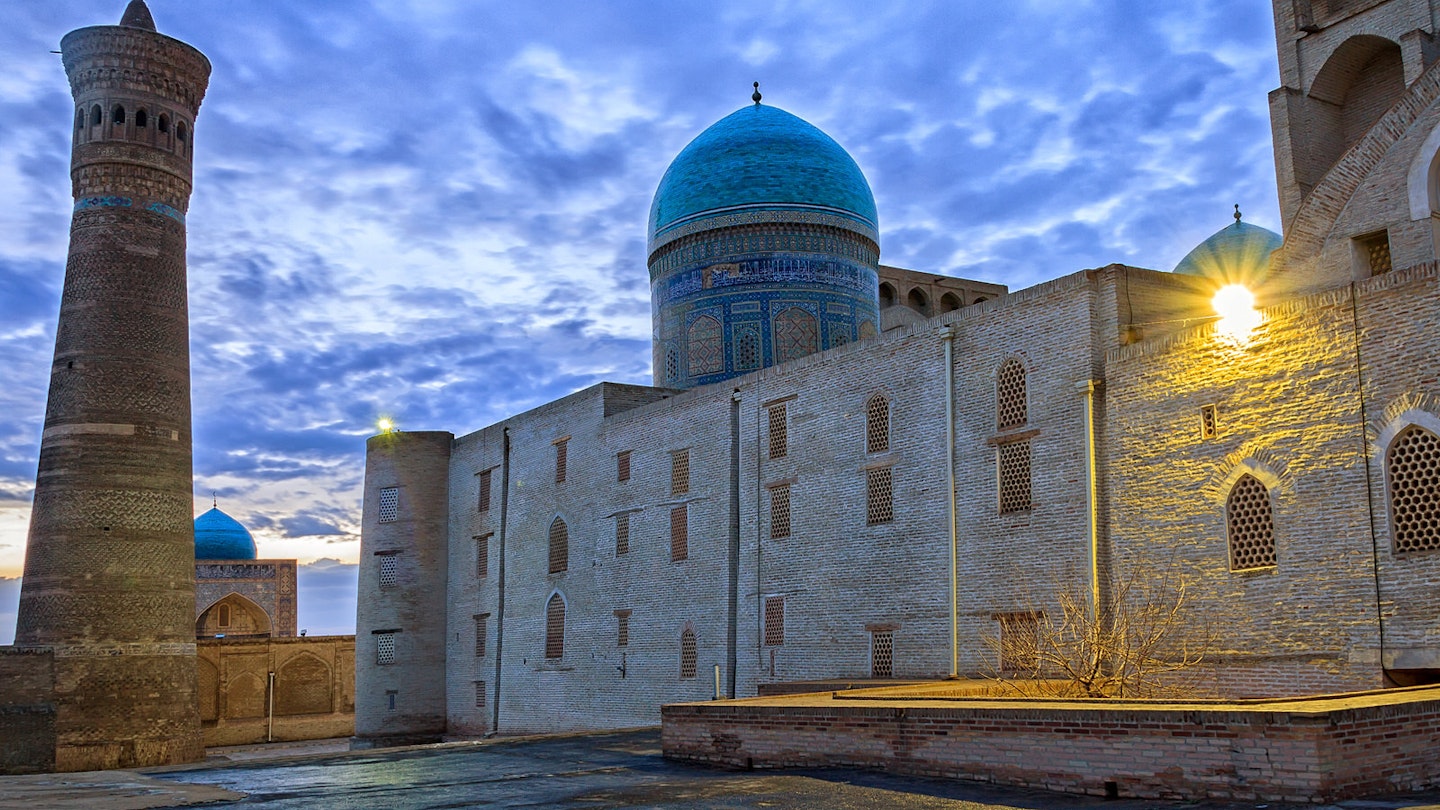Unveiling the Majestic Silk Road Sights of Uzbekistan
Desert citadels, crumbling mud fortresses, mosaic-adorned medressas, and bustling market bazaars define Uzbekistan, the heart of the historical Silk Road.
As maritime and air trade dominated, the Silk Road’s significance waned, causing Central Asia’s cultures to fade under decades of Soviet rule, becoming almost forgotten by travelers.

Recently, Central Asia has begun to welcome a new wave of travelers eager to explore the storied Silk Road. Uzbekistan, a central crossroads for ancient traders journeying between the Far East, Europe, Persia, and North Africa, offers an array of fascinating sights for history enthusiasts.
For those intrigued by the genesis of international commerce, religious ideas, art, language, and culture, a journey to Uzbekistan is essential. Below are Uzbekistan’s premier Silk Road attractions:
Samarkand
The Registan
Undoubtedly, the most breathtaking landmark in Central Asia is Samarkand’s Registan. This central square is surrounded by intricately tiled, mosaic-covered medressas that shimmer at sunrise and sunset in vibrant hues. Constructed during the Timurid dynasty from the 1400s to the 1600s, this historic site was once a bustling medieval bazaar, making it a pivotal crossroads of the Silk Road.
Gur-e-Amir
Understanding the magnitude of the Silk Road’s history requires acknowledging Timur’s (Tamerlane) vast empire (1336-1405). The Gur-e-Amir mausoleum, a stunning gilded structure adorned with shimmering mosaics, serves as his final resting place and is among the most magnificent Silk Road sites.
Shah-i-Zinda
This poignant avenue of mausoleums is not only one of the world’s most stunning Islamic sites but also an exceptional showcase of artistic influences along the Silk Road. The tilework of Shah-i-Zinda reflects a remarkable fusion of Persian, Central Asian, and East Asian styles.
Bibi-Khanym Mosque
Adjacent to the Registan, the grand Bibi-Khanym Mosque complex is a massive and intricately decorated mosque that was, upon its 14th-century construction, one of the largest globally. Built with funding from Timur’s campaigns in India, its imposing dome is a spectacular sight as one approaches.
Bukhara
Kalon Mosque & Minaret
A captivating legend recounts that during Chinggis Khan’s incursions into Central Asia, the towering Kalon Minaret overlooking the Kalon Mosque complex in Bukhara remained untouched. This majestic mosque and medressa complex epitomizes Islamic architectural splendor, featuring exquisite tiling and mosaics along with its iconic mud-brick minaret.
The Ark
The Ark, a 5th-century fortress-town located in Bukhara’s heart, is one of Uzbekistan’s oldest structures. It served as the residence for Bukhara’s emirs during its emirate period (1785–1920), providing visitors with insight into the lives of those who inhabited this pivotal Silk Road town.
Char Minar
Though small, Char Minar is an iconic representation of Silk Road architecture in Uzbekistan. The design, influenced by Indian and South Asian aesthetics, celebrates the artistic intertwining that occurred across the region.
Silk Road Bazaars
While every city in Uzbekistan boasts vibrant bazaars, none evoke the spirit of the Silk Road as profoundly as those in Bukhara. The interconnected domed market spaces, including the Taki-Sarrafon (Moneychangers Bazaar) and Taki-Telpak Furushon (Capmakers Bazaar), reflect the region’s rich trading heritage.
Khiva
Ichon Qala
According to legends, Khiva was established by Noah’s son. Regardless of the truth, it became a significant trading fort by the 8th century, flourishing after 1592 when the Uzbek Shaybanids declared it their capital. Today, the well-preserved walled old town of Ichon-Qala stands as a remarkable testament to Silk Road history.

Kalta Minor Minaret
Stirring the more recent history of Khiva, the bulbous, blue-tiled Kalta Minor Minaret was initiated in 1851 but remains unfinished due to the sudden death of its creator, Mohammed Amin Khan. Legend suggests this minaret was intended to be visible from Bukhara.
Other Silk Road Sights in Uzbekistan
Khan’s Palace – Kokand
In the eastern Fergana Valley lies Kokand, the first stop east of Tashkent and the site of its own khanate during the 18th and 19th centuries. The Khan’s Palace, featuring numerous courtyards and 114 ornately decorated rooms, served as the residence for the ruling empire.
Termiz Archaeological Museum – Termiz
The southern city of Termiz, located near the border with Afghanistan, was once a cosmopolitan center rich in Buddhist, Bactrian, and Islamic cultures. The city’s archaeological museum houses an impressive collection of Silk Road treasures, from Greek-influenced sculptures to Buddhist relics and Bactrian ivory chess pieces.

Ellik Kala – Khorezm
The archaeological site named “Fifty Fortresses” consists of multiple ancient walled towns that once functioned as trading centers along the Silk Road. Some of these ruins boast a history spanning over 2000 years, enduring in the arid deserts of western Uzbekistan.





